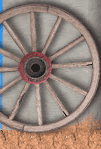We deal in items we believe others will enjoy and want to purchase.
We are not experts.
We welcome any comments, questions, or concerns.
WE ARE TARGETING A GLOBAL MARKET PLACE.
Thanks in advance for your patronage.
Please Be sure to add WDG to your favorites list!
NOW FOR YOUR VIEWING PLEASURE…
(8) EIGHT COCKTAIL DRINK FORK
AZTEC STYLE
FOR YOUR OLIVES OR OTHER GARNISHMENT
MEXICAN STERLING
ATTRIBUTED TO TAXCO ARTIST
HALLMARKS ARE WORN AND HARD TO READ
ESTIMATED CIRCA 1930
FETISH FIGURES ARE:
A DONKEY BURRO, A VILLAGE, MAN BY A CACTUS(2), MAN IN SOMBRERO SLEEPING, MAYAN EAGLE (2), MAN IN FIELD
USED. VINTAGE ? ANTIQUE
STERLING SILVER WEIGHT IS AROUND 18gr.
LENGTH RANGES AROUND 3.1/2"
ARTISAN - HAND MADE
SOUVENIR KEEPSAKE
----------------------------------------------
FYI
Taxco (full name: Taxco de Alarcon) is an antique colonial silver-mining center located in the northern reaches of the Mexican state of Guerrero. It is located at 18°33′N 99°36′W, some 200 km southwest of Mexico City along the old highway to Acapulco. It stands at a height of some 1800 m above sea level in the western arm of the Sierra Madre. The city serves as the administrative center of the municipality of the same name, which covers a total area of 347 km² of the surrounding territory.
Even though silver mining had been the main commercial activity of Taxco since colonial times, in the present silver mining is no longer considered a profitable activity, and the city is better known for its traditional silverwork, which attracts tourism throughout the year.
The city is built on the side of a mountain, with very steep narrow cobblestone streets lined by whitewashed houses with red-tiled roofs. It is also renowned for its more than 200-year-old baroque-style church, the Santa Prisca Cathedral.
In the late 1920's the highway from Mexico City finally reached Taxco and in 1926, William Spratling, a U.S. citizen and associate architecture professor from Tulane University arrived in Taxco to study Mexico and its culture. Formerly a resident of Sanyea, New York, in 1929 he moved to Mexico and was welcomed into the influential artistic circles of Mexico. He was an architect who came to Taxco with the intentions of writing a book, Little Mexico. He purchased a house there after receiving $2000 for arranging Frescoes to be painted at the Cortes Palace in Curnavaca by his friend Diego Rivera. Spratling had previously succeeded in promoting Rivera's work in New York. In 1931 U.S. Ambassor Dwight Morrow commented to Mr. Spratling that Taxco had been the site of silver mines for centuries, but unfortunately had never been considered a location where jewelry and objects of silver were designed and made. This seemingly insignificant comment changed the course of Taxco's artistic and economic history.
Mr. Spratling discovered the potential talent in the locals and motivated the community artisans to create designs and rediscover the craft of silversmithing. With his own designs he created an apprentice system of training young silversmiths with artistic talent and gave them the opportunity to develope their skill. He brought in from Iguala a highly regarded goldsmith to teach the art of working precious metal. The great beauty and craftmanship coming out of Taxco earned worldwide recognition and fame once again for Mexico. Over time many of these artisans opened workshops and stores of their own- all encouraged by his unwavering support. Now considered the great old masters of Mexican Silver, Mr. Antonio Pineda along with former fellow apprentices the Castillos, Ledesma, and Chino Ruiz have produced and continue to craft some of the most highly regarded, collectable pieces of art, vases, serving sets and jewelry. Their work continues to inspire the next generation of silversmiths and artisans who now number in the hundreds.
William Spratling, (1900-1967 while in Taxco he discovered the talented craftsmen producing handmade silver jewelry and tableware. Being a connoisseur of Popular American art Spratling took much interest in the talents of the local craftsmen. Convincing Master goldsmiths Artemio Navarrette, Alfonso Mondragon, and Wencesloa Herrera from nearby Iguala he was able to open his own shop known as, "La Aduana." As his shop flourished he eventually opened "Las Delicias" These three men along with Spratling developed an apprentice system by which many young silversmiths were trained. These young silversmiths included, Antonio Pineda, Antonio Castillo, Chino Ruiz, and Enrique Ledesma. These men are now considered the Great Mexican Masters of Silver. Spratling's workshop produced silver jewelry and tableware based on pre-hispanic art which he exported to the United States in bulk. The shop flourished and Taxco's reputation and craftsmen were recognized worldwide.

(STOCK PICTURE FOR DISPLAY ONLY)
---------------------------
Thanks for choosing this sale. You may email for alternate payment arrangements. We combine shipping. Please pay promptly after the auction. The item will be shipped upon receipt of funds. WE ARE GOING GREEN, SO WE DO SOMETIMES USE CLEAN RECYCLED MATERIALS TO SHIP.
Please leave feedback when you have received the item and are satisfied. Please respond when you have received the item * If you were pleased with this transaction, please respond with all 5 stars! If you are not pleased, let us know via e-mail. Our goal is for 5-star service. We want you to be a satisfied, return customer.
Please express any concerns or questions. More pictures are available upon request. The winning bid will incur the cost of S/H INSURED FEDEX OR USPS. See rate calculator or email FOR ESTIMATE. International Bidders are Welcome but be mindful if your country is excluded from safe shipping.
Thanks for perusing THIS and ALL our auctions.
Please Check out our other items!
WE like the curious and odd.
BUY, BYE!!
I






